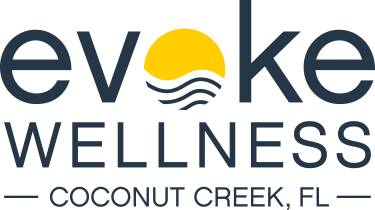While inhalant abuse is dangerous and scary, it can be one of the easiest types of abuse to spot. If you see inhalant addiction symptoms in your child or a loved one, you can get them the addiction treatment they need and deserve. But what are the signs of inhalant addiction? In short, people struggling with an inhalant addiction may have paint on their faces or smell of solvents. Unfortunately, there is no shortage of substances that can be inhaled to produce a high, form an addiction, and require addiction treatment to break the cycle of dependency and addiction. Contact us at Evoke Wellness at Coconut Creek by calling 866.693.3871 today to learn how our caring professionals can help.
What Are the Signs of Inhalant Addiction?
So many different types of substances can be inhaled, it would be challenging to catalog them all. The list includes everyday items such as:
- Markers
- Nail polish remover
- Hair spray
- Glue
- Whipped cream canisters
- Cleaning fluid
This is just a fraction of the various substances that can be inhaled and abused.
Inhalant Addiction Symptoms
A person who has been abusing inhalants may appear to be drunk, with slurred speech and a disoriented manner about them. They may also be nauseated and not want to eat. When asked what are the signs of inhalant addiction, one answer is food scarcity. Like caffeine and nicotine, inhalants suppress appetites, meaning less food needs to be purchased. A person high on inhalants is also likely to suffer exhaustion and be unable to focus, while less obvious inhalant addiction symptoms include damage to blood, kidneys, liver, heart, and bone marrow. Because a person’s judgment is impaired and inhibitions are lowered after heavy use of inhalants, individuals may engage in dangerous activity while high from inhalants.
Additional inhalant addiction symptoms include physical evidence that can be spotted around your home and/or the user’s bedroom. For example, a person using inhalants to get high may leave behind evidence of solvents or paint and may leave piles of rags that are saturated with paint thinner, degreaser, or gasoline. Chronic users could leave piles of empty compressed air cans or nitrous oxide canisters in their wake. If a young person is just experimenting with inhalants, they may be sloppier in disposing of the evidence of their addiction.
The Most Dangerous Inhalant Addiction Symptoms
Sadly, the misuse of inhalants can be fatal. This is because oxygen in the lungs is being replaced by a gas that can be deadly. People with an inhalant addiction can suffer an irregular heartbeat that results in death or cardiac arrest, or even suffocate while using inhalants, resulting in unconsciousness, coma, or death.
Repeated use of inhalants can develop a tolerance, meaning that more of the substances are needed to achieve the same high. This means that the risk of abuse and addiction is going to become more serious, and permanent brain damage can follow without proper addiction treatment.
A person suffering damage from inhalants can experience:
- Mood swings
- Shakiness
- Seizures
- Blindness
- Glaucoma
The Importance of Inhalant Addiction Treatment
If you or someone you love is unable to break the cycle of addiction alone, a professional addiction treatment program may be needed to help you stop using inhalants, heal, and begin recovering. In fact, while it may not seem as serious as abusing illicit drugs like cocaine or heroin, rehab can be needed because some of the substances being inhaled are just as physically and psychologically addicting.
Through a range of counseling and life skills training, our clients begin to heal and go on to enjoy a healthy, happy, productive life.
Learn More at Evoke Wellness at Coconut Creek
If you see inhalant addiction symptoms in yourself or someone in your life, contact us at Evoke Wellness Coconut Creek today by using our secure online form or call us at 866.693.3871. Our addiction treatment programs can break the cycle of drug use and be where recovery begins.


